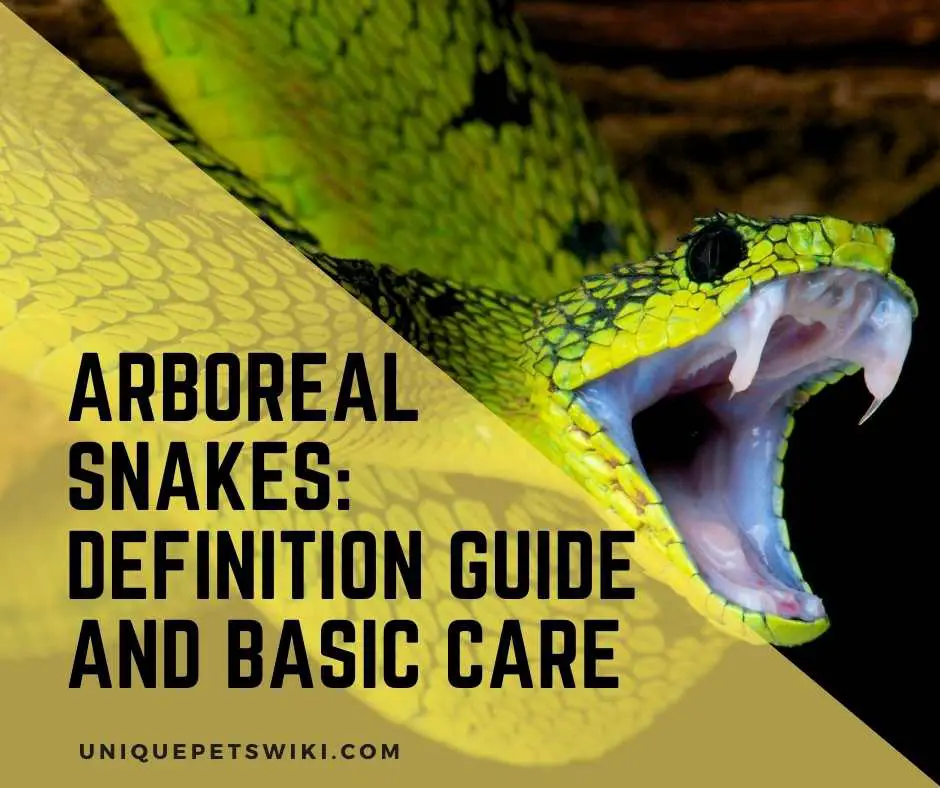The article will help you know about arboreal snake and how do you care for it.
There are numerous species of snakes around the world. Their classifications are based on numerous factors including their way of killing prey and where they spend most of their time.
There are snakes that crawl on the ground and spend most of their time doing so.
In addition, there are those snakes that live up in the trees for most of their lives. Understanding this requires us to focus on knowing what arboreal snakes are.
Contents
What are Arboreal Snakes?
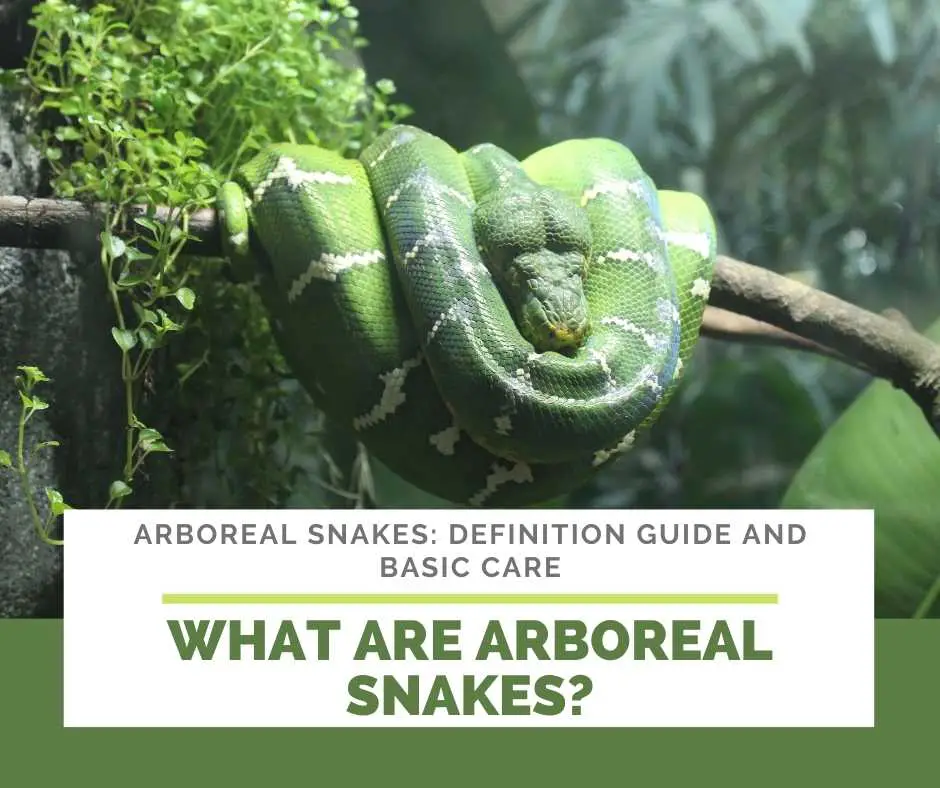
In the last article, we talked about harmless snakes, which is quite suited for new beginners. This topic will share with you what is an arboreal snake and answer the question: does it suit for reptile beginners?
Imagine the time you walked down a park or a forest while on vacation. The hope was to see some animals within the jungle.
You look for all possible hiding points where animals or birds could be hiding. As you look into your binoculars to see the higher and further edges of the trees, you see a green snake with markings on the body curled around a branch.
The definition of arboreal snakes
What you have just seen is an arboreal snake. Arboreal snakes are snakes that spend the majority of their time in the trees. These snakes vary from their size and species. The focus of this article will be small arboreal snakes.
Arboreal snakes include both venomous and non-venomous. We will focus on various characteristics of these snakes and how they can be kept as pets.
Where do you found arboreal snakes?
At times, these snakes can be found on the ground, but they mostly hang low on the trees as they search for prey. Their prey mostly consists of birds, tree mice, rats, bats, and in some cases, lizards. Some of the arboreal snakes are opportunistic feeders.
Arboreal snakes list
List of 14 species of arboreal snakes. Some of them are rare and you will hard to get one as pet.
| Name | Size | Range | Food |
| Green Tree Python | 4ft – 6ft | New Guinea, Indonesia, Australia, and surrounding islands | Birds, Mice, Rats |
| Amazon Tree Boa | 4.5ft – 7ft | Amazonian South America | Birds, Mice |
| Emerald Tree Boa | 4ft – 8ft | South American rainforests | Mice, Rats, Birds, Chicks |
| Malagasy Tree Boa | 4ft – 5ft | Madagascar | Rats, mouse, lemurs, frogs, small birds, and small mammals |
| Mangrove Snake | 5ft – 6ft | Thailand, Indonesia and the Philippines | Frogs, lizards, slugs, rats, small birds |
| Rough Green Snake | 1.7ft – 2.5ft | New Jersey to Kansas, Southern USA, and North East of Mexico | Crickets, Waxworms, Larvae, Wild-insects |
| Eyelash Viper | 1.1ft – 3ft | Mexico, Central America, Venezuela, Colombia, Ecuador | Mice |
| Red-Tailed Boa Constrictor | 6ft – 12ft | North and Central America | Rodents, mice, rats, birds |
| Spotted Python | 4ft – 5ft | Australia | Mice, rats |
| Green mamba | 6ft – 7ft | Southern Africa from Tanzania | Mice, rats |
| Carpet Python | 6ft – 7ft | Coastal Northeastern, Australia | Rats |
| Bush Viper- rare snakes | 1.3ft – 2.3ft | Nigeria, Kenya, Angola, Tanzania, Equatorial Guinea | Mice, frogs |
| Brown Tree Snake | 3ft – 7ft | New Guinea, Australia, Saipan and Guam | Lizards, amphibians, eggs, other reptiles, bats, and rodents. |
| Egg-Eating Snake | 3.3ft – 3.8ft | Sub-Saharan Africa, Middle East | Small bird eggs |
What are Small Arboreal Snakes?
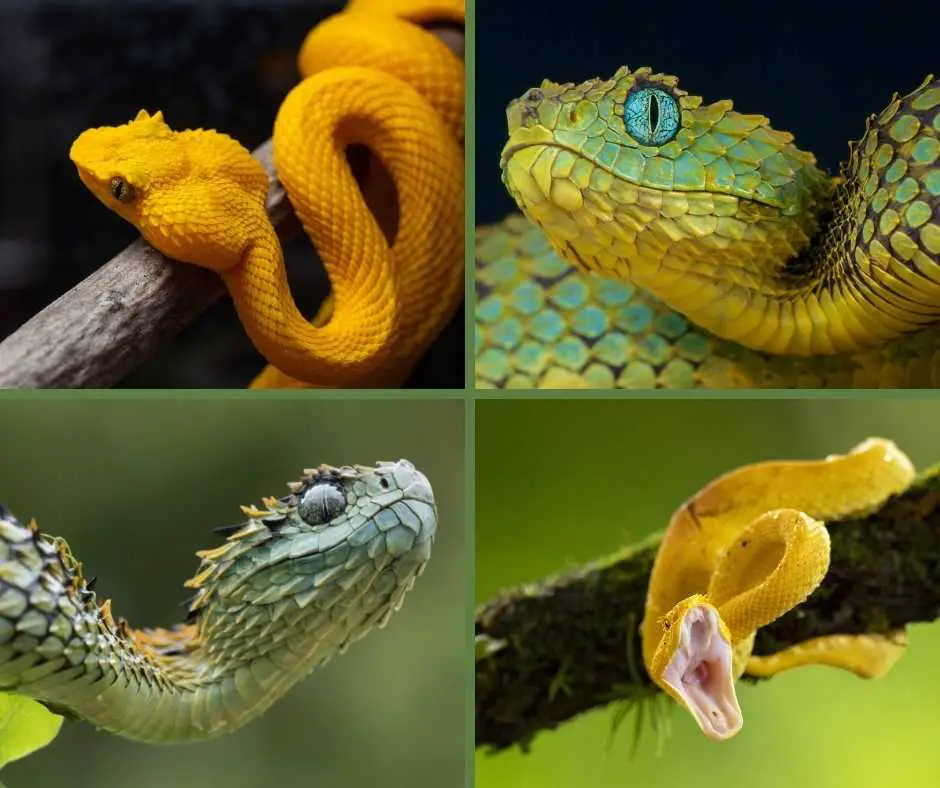
Small Arboreal Snakes are the arboreal snakes with a small size. As the list of arboreal snakes species above. The Bush Viper is one of the smallest arboreal snakes.
Basic Care Sheet of Arboreal Snakes
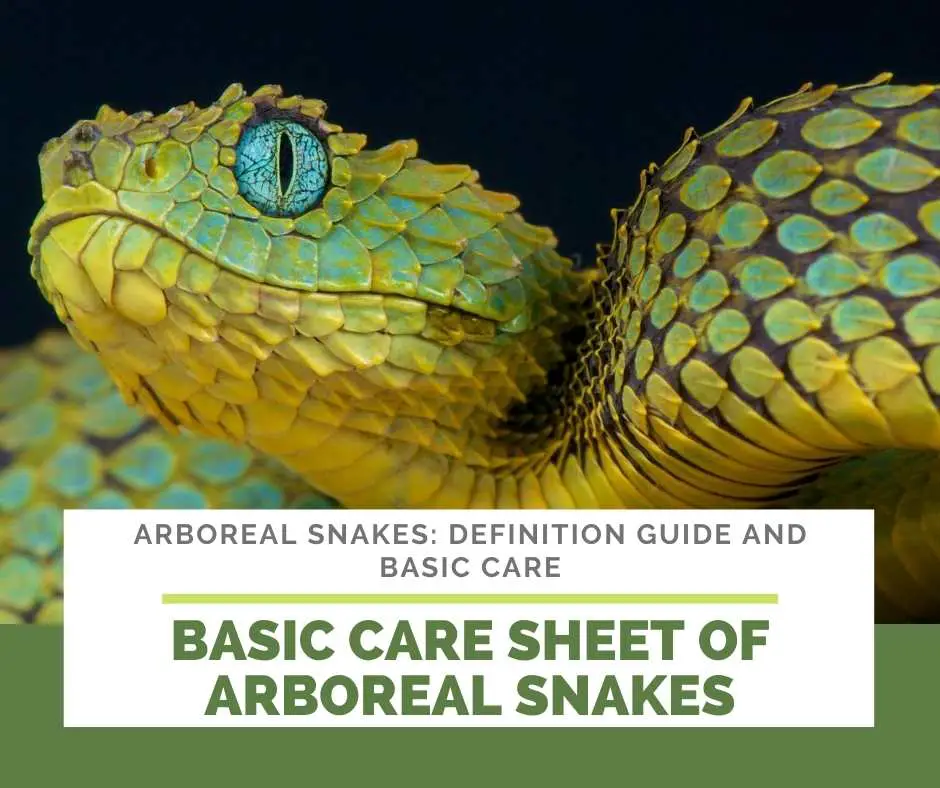
Getting your snake into its new home requires preparation. It means that you need to be ready for the tasks involved, and your family needs to be kay having the new reptile pet around.
You need to ensure no one in the family is scared of snakes.
Furthermore, if you live in a rented space, ensure the landlord allows pet snakes on the premises.
Additionally, understand basic issues regarding snakes. They are carnivorous and consume their prey whole.
You need to have proper food access and storage mechanisms in place.
Also, you need to think around all these items and more discussed below before deciding to purchase a pet snake.
Among the basic care items to think when dealing with arboreal snakes include:
- Vital equipment
- Feeding
- Shedding
- Handling
- Home environment
- Exercise
- Regulation and licensing
Vital Equipment
Last update on 2022-12-30 / Affiliate links / Images from Amazon Product Advertising API
Snakes, in general, require vary of equipment in their cage. You should know the things you need in a snake cage and things to avoid.
As is the case with all other snakes, a pet arboreal snake also needs an enclosure. The enclosure should have space for hiding and climbing just like they would do out in nature.
However, note that unlike for other pets, such as birds, crabs, and fish, a bigger home is not the best option for a snake.
When you keep your small snake in an enclosure that is too big, it tends to become anxious.
In general terms, arboreal snakes need tall enclosures.
Therefore, when looking for a terrarium for your arboreal snake, ensure its height exceeds the length.
Before shopping for the pet, after confirming the kind you would like, please also check out different terrariums that will fit its needs.
Advice from breeders, pet storekeepers, and online research should come in handy when deciding.
You also need to choose the ideal substrate material for the snake
Ensure that it matches the natural environment where the snake lives in the wild as much as possible. The close to the wild you can make the enclosure for your pet, the healthier it will be.
Rocks, branches, vines, and other accessories in the terrarium should match the snake’s needs.
Ensure that the terrarium also has a section where the snake can hide. This can be a cave made from rocks or cardboard.
Snakes need to hide and rest in a place where they feel safe. Provide the appropriate ultraviolet-B (UVB) light depending on your snake. Note that not all snakes require it, and it can harm those that do not need it.
Addition to home environment of arboreal snakes
Additionally, ensure that there is some basking rock or branch near a basking light within the terrarium.
Snakes have special requirements regarding humidity and temperature. Assemble necessary tools, including hygrometers and thermometers, to measure them. Ensure that you understand the specific needs of your snake.
Add some under-tank heating measures in place. Caution should be instituted when placing the heating pad. Snakes do not need the entire floor heated, but only a specific area. Depending on individual snake species’ needs, ensure that proper heating is done. A heat gradient in the terrarium should be attained.
Prior to bringing the snake into its cage, monitor temperature and humidity in different parts of the terrarium a few times during the daytime and nighttime too. They need to be stable and ideal for the snake. Failure to do the same will result in the suffering of your favorite arboreal pet snake.
Feeding arboreal snakes
Last update on 2023-01-01 / Affiliate links / Images from Amazon Product Advertising API
With the exception of egg-eating snakes, others survive on meat. They eat whole animals with their bones and innards intact.
The majority of arboreal snakes survive on rats, mice, and birds. A few also eat other reptiles and amphibians. Large insects are also meals for some small species.
Luckily, most snakes are okay with eating dead prey.
Dead prey should be frozen in a separate freezer and fully thawed before presenting it to the snake.
Pet stores sell dead prey for snakes.
You can also get these food items from breeders who keep mice for snake food.
Arboreal snake food amount
It is also advisable to separate where you keep the snake’s food from other food items from your family.
The number and size if the meal will depend on the snake’s needs.
Some will only eat a single mouse, while others will consume more than one. If new to snake feeding, begin with prey that is the same size as the mid-section of your pet.
In case the snake seems reluctant when presented with dead prey, wiggle the meal slightly. You also need to have some cover in the terrarium to increase privacy. If not comfortable and settled, a snake will most likely eat only if there is ample privacy in the cage.
Leave the meal in place and let the snake eat in peace.
If these tricks do not work on your snake, try to feed it live prey.
However, in that case, you must watch as the snake “hunts” and eats the meal.
This is mainly because leaving it with another live animal in the cage is highly dangerous without supervision. A scared prey could injure your snake using its teeth and claws.
Finally, you must always provide clean water for your snake. At a minimum the water bowl needs cleaning twice a week or anytime the water gets dirty.
Shedding of arboreal snakes
Every snake sheds its skin often. In some cases, it happens monthly or so.
Grooming during this time is critical for the process to happen.
When the temperature and humidity are right, and the shedding process goes well, the snake will do everything independently.
It can take up to a week to complete when the process starts.
In case some problems arise during the process, it is vital for you to come in and assist.
One main problem that causes difficulty shedding is dry air. As such, one of the first things to do is raise the humidity in the enclosure. At the same time, add some damp paper towels in a box and some additional soft substrate.
Ensure the cage has ample items for the snake to rub on. You can add soft stones and branches. These items aid in the scratching of the snake’s body. Note that if these approaches do not work and your snake still suffers from the difficult shedding, you need to make a visit to a vet.
Handling arboreal snakes
Last update on 2023-01-01 / Affiliate links / Images from Amazon Product Advertising API
Over time, most pet snakes get used to being handled. However, even for arboreal snakes, do not try to handle the snake with your hands until it has taken at least four meals.
This period can be about a month after it arrives, as most small snakes only need one meal per week. When ready to handle the snake, start slowly touching the middle third of its body.
Note that your vet may instruct for other handling forms, including when cleaning the head or tail, as necessary. Watch out for your snake’s demeanor to ensure it is not agitated when you start.
Once a relationship has been established and the snake gets used to handling, do not go for a week without handling.
Home Environment for arboreal snakes
Ensure that the home environment where your snake has its cage is calm. It needs to enable the snake to relax and digest its meal without distractions.
There is a need to always tend well to the snake no matter the level of environment. Getting a snake home means you need to be prepared to ensure its comfort.
In case you live in a noisy area, some level of noise canceling is vital to prevent startling the snake.
A startled snake is normally agitated and uncomfortable, which also increases its agitation, and it may bite or attack when you try to handle it. Also, avoid unnecessary handling as the snakes need rest. The same applies to your other family members.
Exercises
Last update on 2023-01-01 / Affiliate links / Images from Amazon Product Advertising API
All pets require exercise but snakes only do so to a lesser extent. You must provide your snake ample space to move around the cage.
There should be good climbing equipment, including branches for the snake. Arboreal snakes will do a lot of climbing, which is the necessary exercise that the snake needs.
In case the specific snake species also do well in water, including swimming, ensure there is a wading pool available.
The water should be kept clean at all times. These forms of exercise are what is required for snakes. Do not put your arboreal snake and take it for a crawl.
Regulation and Licensing
Depending on where you live, some snake species may have necessary licenses or regulations.
In the case of the United States, each state has its regulations on reptile keeping as pets.
These regulations are important t understand as some species may be illegal to keep. Furthermore, you may be moving from a state where it is legal to keep the snake, but illegal in your new state.
Therefore, ensure that you have a clear understanding of the pet species and regulations around it.
You also need to be concerned about the origin of the pet. The illegal pet snake trade could result in your snake coming from one of the areas where it is illegal to export snakes.
Best Arboreal Snakes for a Beginner
Arboreal snakes are not ideal for beginners in general. From research, there is only one snake ideal for a beginner: the spotted python.
All the other snakes are ideal for intermediate and advanced keepers. Someone needs to understand keeping pet snakes before they can start keeping arboreal snakes.
Spotted Python
You need to know that spotted pythons are not dangerous, which also makes them ideal for beginners.
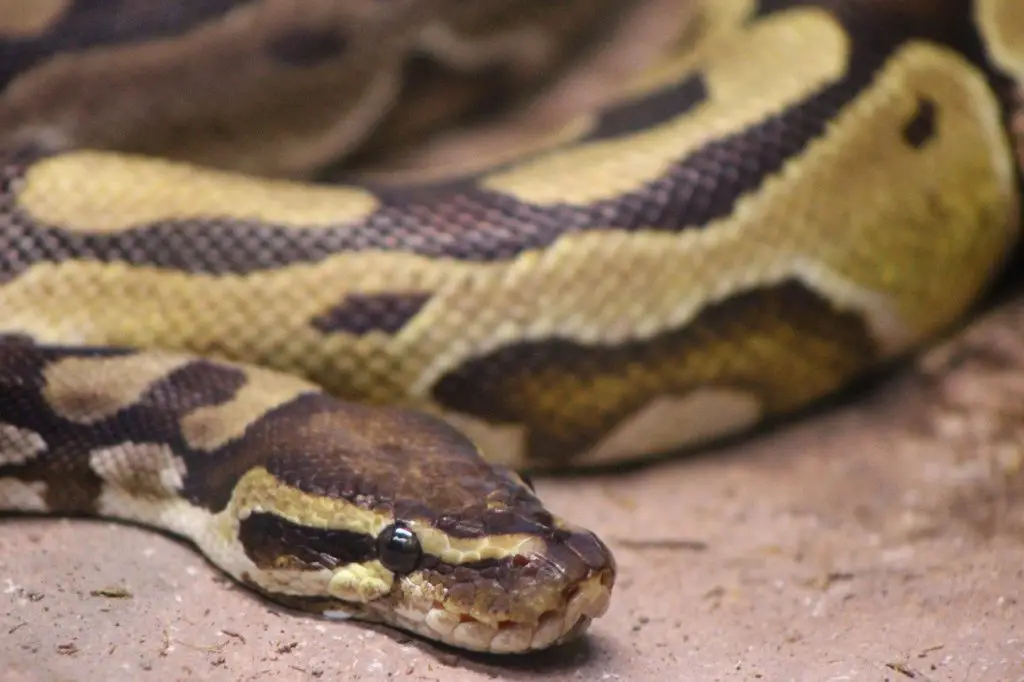
These snakes can live in captivity for more than 20 years. They
The snake is among the smallest pythons, and they have bold patterns with a dark body and lateral splotches. It is a nocturnal species that also thrive in the shrubs and woodlands.
In general, spotted pythons do well with regular handling making them appropriate for beginners.
This snake needs a clean enclosure that is also well-ventilated. You should provide them with platforms and branches for them to climb since they are arboreal.
You should also provide your pet with a hide box in the cage. The captive snakes need fresh drinking water. Place the water in bowls that are made of nonporous materials.
Bonus: are black snakes arboreal snakes?
Black snakes, in general, are non-venomous. Which means black snakes are not poisonous. This is a semi-arboreal snake, which is they can climb to the three or your wall. Check out our article about semi-arboreal snakes to read more about it.
